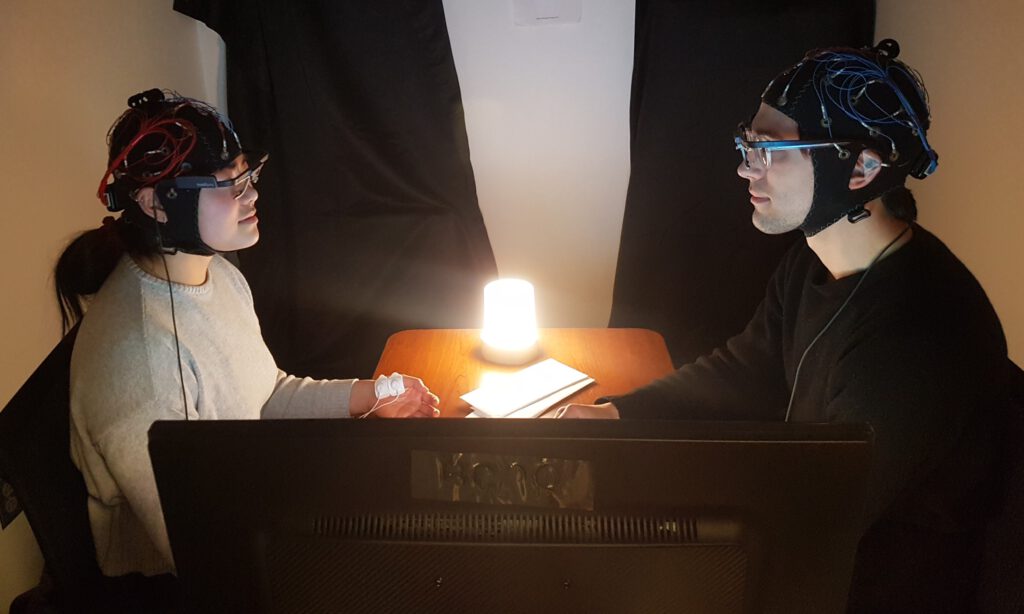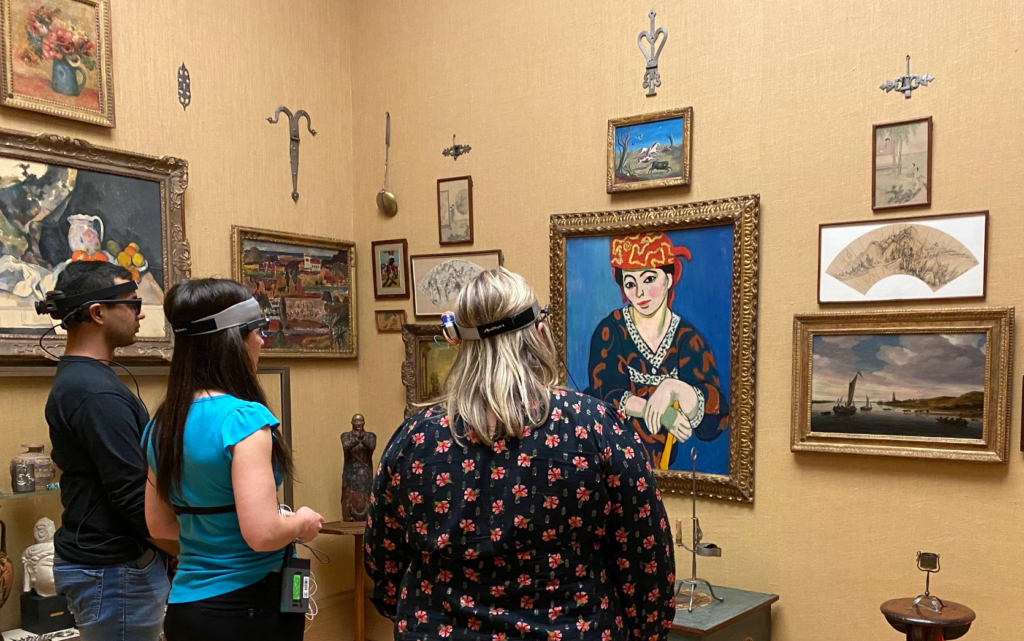
The pandemic clearly showed us the importance of interpersonal connection, direct eye gaze, seeing someone smile at us, and giving and receiving affectionate touch.
When we connect with someone in person, our physiology (e.g., heart rate, skin conductance response, brain waves) may start to synchronize with the physiology of the other person. This and behavioral synchrony (e.g., facial mimicry) may be a key factor underlying our feeling of “connection” with others.
In the context of the Wharton Neuroscience Initiative, we are currently investigating these processes involving synchrony and connection. I am specifically interested in studying which exercises and interventions (e.g., partner or team exercises, meditations, synchronous breathing etc.) may help enhance interpersonal connections.
We are also applying this in the business context, with the aim of building better teams and more trust in companies and organizations. For example, we collaborated with Matriarca – a sustainable project involving artisans (mostly women) from indigenous communities in Argentina. In this project, Matriarca successfully used a scientifically derived method to enhance connection between artisans in a remote context.
Connection via Contemplative Exercises and Meditation
Some of the methods that we study involve meditation, such as our project on contemplative dyad meditation, funded by the MindScience Foundation. This meditation method involves two people meditating together, rather than alone. They take turns sharing their experiences in the present moment while their meditation partner is simply listening. Our preliminary results regarding the impact of this method on well-being and mindfulness in young adults have been promising. We also study eye-gazing meditations and other types of meditations carried out as a pair.
Connection via Shared Experience of Art
Together with Zab Johnson and art museums, we are also investigating the impact of guided social exercises for looking at art on connection, well-being, and physiology. This is shown in the picture below, taken during a pilot experiment in the Barnes Foundation, Philadelphia. In the picture, we are wearing respiration belts, eye trackers, simple EEGs to track brain activity, skin conductance, and heart rate monitors.

Connection via Coaching & Facilitation Methods
Some of the methods to foster authentic connection, collaboration, and teamwork that we investigate come from a coaching context. There is relatively little psychological or neuroscientific research on methods, exercises, and tools that are routinely applied in coaching. In the context of the Wharton Neuroscience Initiative, we have been exploring how neuroscience may explain why and how certain coaching methods (e.g., team building exercises) work. We hope that our work will lead to greater accessibility of these methods, a greater motivation for people to actually use them, and to new discoveries on how to further improve existing methods.
One example is our work on exercises to strengthen perspective taking skills, as used by trainer Per Hugander from the Swedish bank SEB. We describe the potential neuroscientific basis of this method here and give a step-by-step instruction on how to use it here. Another example is our article on methods that are useful to facilitate group discussions in order to facilitate innovative idea generation.